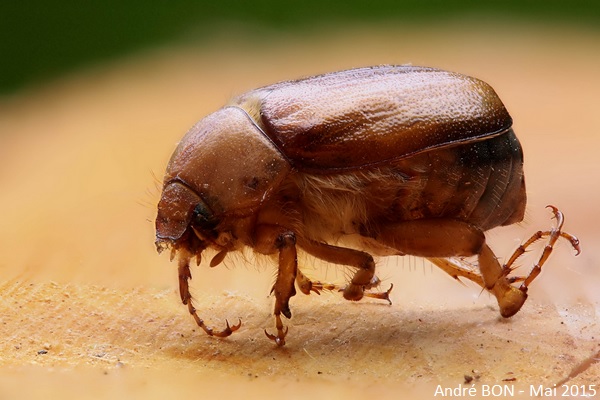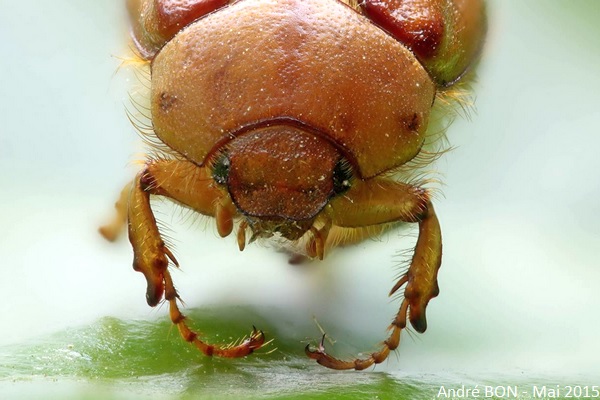

| Striped Summer Chafer (Rhizotrogus aestivus (Olivier, 1789)) |


|
|
Scientific name: Rhizotrogus aestivus (Olivier, 1789) Common name: Striped Summer Chafer French name: Hanneton d'été, Petit Hanneton de la Saint-Jean. Order: Coleoptera Family: Melolonthidae Wingspan : 14 to 18 mm. Biotope: Open habitats. Geographic area: Continental Europe, east to the Caucasus. Asia Minor, Iran and the Balkan Peninsula. Observation period : April-May. |
Chafers of the Rhizotrogus genus are small size chafers bearing antennae of 10 articles including 3 in the antennal club. Rhizotrogus aestivus shows a pale brown, lengthy and convex body with often a darker area over the junction of the elytra. The elytra and the pronotum are hairless. The pronotum is finely punctuated. It is bordered by long hairs on each lateral edge and by slightly shorter hairs on the front edge. It shows a dark elongated central patch. The posterior angles are right-angled and they are a slightly prominent. Larvae grow in the soil during three years, feeding on roots. Rhizotrogus marginipes shows a pronotum covered by long tawny hairs. Rhizotrogus cicatricosus shows a shiny pronotum with the two posterior angles obtuse and rounded. The European Chafer (Amphimallon majale), which bears antennae of 9 articles, shows a pronotum with the lateral edges strongly sinuate before the posterior angles. The elytra are covered with short and dense hairs. |
| [To know more about the Striped Summer Chafer] [Next picture] [Top] |

|
I have found this chafer dead in my garden. I was looking for an immobile subject to try some "photo stacking", here it is. |
| [To know more about the Striped Summer Chafer] [Previous picture] [Top] |

|
This picture, which is a merge of 65 shots, clearly shows the finely punctuated pronotum. You can guess the dark elongated central patch. The posterior angles are right-angled and slightly prominent. I think that this one is Rhizotrogus aestivus. |